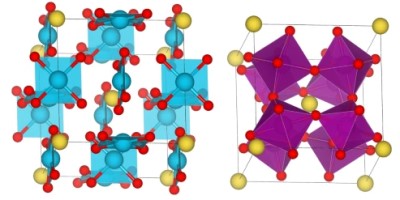New Insights into Magnetoresistance
Nature Communications article addresses a long-standing problem in magnetoresistance.
Magnetoresistance, the phenomena where the electric resistance of a material changes under applied magnetic field is a technologically important property, for example in the reader heads of computer hard drives that sense the state of magnetic “bits” . Many conducting materials exhibit this phenomenon to varying degree, but changes in resistance under applied fields are typically not much more than a few percent. This greatly limits the sensitivity and hence scope of the applications based on current materials.
However, in the 1990s it was realised that a class of functional materials, based on the manganite perovskite LaMnO3, could be tuned to exhibit colossal changes in resistance as a function of applied field. Chemically this tuning is achieved by “doping” a specific amount of La3+ for Ca2+, resulting in a decrease in the number of unpaired, and hence magnetically active, electrons in the system. It was quickly established that the optimal magnetoresistance responses were achieved for a doping value of 3/8th of an electron. However, it has remained a long-standing conundrum as to why this precise value should lead to the greatest enhancement of this technologically relevant property. Without this precise mechanistic understanding, it becomes very hard to move beyond current issues with these materials, that require low temperatures and high magnetic fields for their operation.
Our research, published in the journal Nature Communications, has taken a step back to revaluate this long-standing problem. Working with collaborators at the National University of Taiwan we have synthesised a perovskite related system at a range of doping levels that span the region where colossal magnetoresistance is maximised in LaMnO3. We study our high-pressure perovskites, that lack many of the structural and chemical complexities of LaMnO3, using brilliant beams of x-ray and neutron radiation that are generated at international central facilities. Our work reveals a new state of matter in which the electrons organise themselves into alternating ordered-insulating, and disordered-conducting, stripes. This structural insight provides strong evidence for how the external application of a magnetic field brings about a collapse of the insulating state, and hence how this property might be enhanced to higher operational temperatures and even greater sensitivities.

